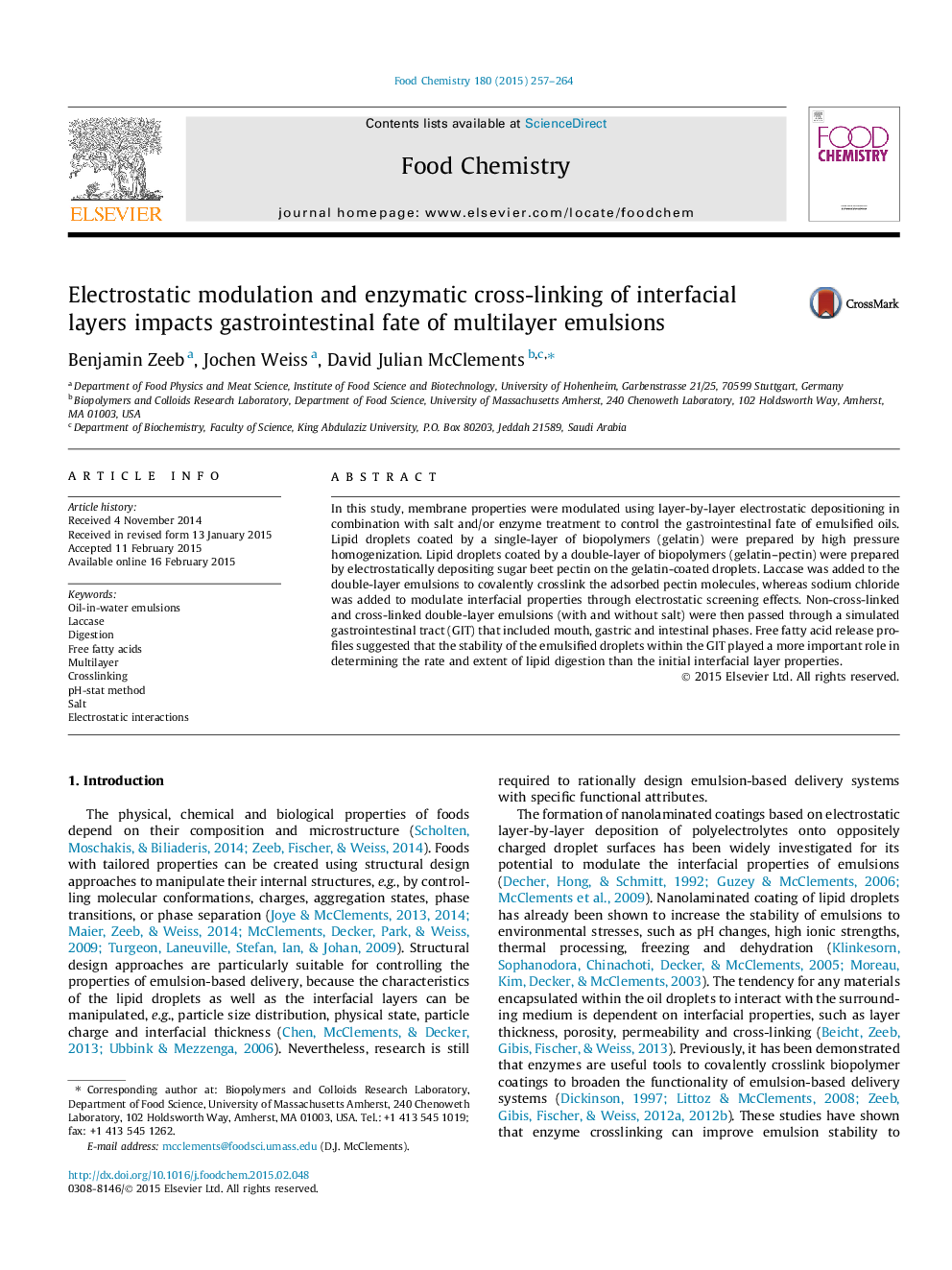| Article ID | Journal | Published Year | Pages | File Type |
|---|---|---|---|---|
| 1184499 | Food Chemistry | 2015 | 8 Pages |
•Formation of multilayer o/w using the LbL method increases the stability within GIT.•Salt addition or enzymatic crosslinking could not prevent hydrolysis of lipids.•The rate of lipid digestion was faster in double-layer o/w than single-layer o/w.
In this study, membrane properties were modulated using layer-by-layer electrostatic depositioning in combination with salt and/or enzyme treatment to control the gastrointestinal fate of emulsified oils. Lipid droplets coated by a single-layer of biopolymers (gelatin) were prepared by high pressure homogenization. Lipid droplets coated by a double-layer of biopolymers (gelatin–pectin) were prepared by electrostatically depositing sugar beet pectin on the gelatin-coated droplets. Laccase was added to the double-layer emulsions to covalently crosslink the adsorbed pectin molecules, whereas sodium chloride was added to modulate interfacial properties through electrostatic screening effects. Non-cross-linked and cross-linked double-layer emulsions (with and without salt) were then passed through a simulated gastrointestinal tract (GIT) that included mouth, gastric and intestinal phases. Free fatty acid release profiles suggested that the stability of the emulsified droplets within the GIT played a more important role in determining the rate and extent of lipid digestion than the initial interfacial layer properties.
